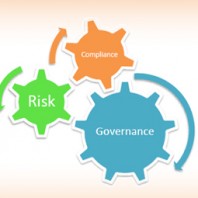Governance Risk And Compliance a must for corporate sustenance
Corporate businesses around the world are treading a slippery slope, owing to the see-saw nature of the world economy today. In such an environment, it is significant for corporate setups to have a stronger baseline of laws for successful and uninterrupted operation. And so the tools of Governance, Risk and Compliance become must-haves for corporate companies, in order to protect and sustain themselves in the market. And sometimes, because corporate jargon is complicated, the importance and functions of GRC is still a foreign language for some.
The Definition of GRC In Today’s Time
The first primary fact to take into account is that GRC is an organizational ism which can be successful only if applied with the help of complete commitment from the top brass of the company. Over the last few years, businesses have been subjected to receiving rude surprises, due to the markets. And because of this, companies have gone back to the drawing board and reconsidered their strategies pertaining to governance, risk and compliance.
GRC – How and Why it Matters
As mentioned earlier, the GRC is an organizational initiative undertaken by businesses to examine the risk factor in their operations, and devise ways to control the same. In addition, the GRC model also seeks to provide companies ways using which they can improve the efficiency and effectiveness in the workings. Companies establish a strong GRC model by firstly, sharing information and data and then preparing a list and distributing it amongst different GRC units in the organization. The core purpose of the GRC is to provide impetus to tasks of all kinds of risk-management.
The Framework
The framework of the GRC model begins with the company’s board members identifying the factors of risk present, and exactly how much of risk would the organization be able to undertake – the risk appetite. The policy sets up some common goals of protection and value creation as well as a module of how working alliances in the organization are expected to operate among the GRC functions. The expectations commonly stated are as follows:
• An overall forecast and focus on the risks on shareholder value.
• Maintaining an overall cover for the enterprise.
• Developing tools and technology to share and exchange important information.
• Impart a good understanding and clarification about the respective primary roles and activities of each function, in order to facilitate better working relationships in the units.
The Benefits
In order to have a successful GRC model, it is imperative to remember important facets. A successful GRC model requires continuous resource supply and commitment from senior authorities. In return, the GRC will bring forth an array of benefits and changes within the organizational setup, such as:
– Continuous better human judgment to all information made available.
– Rigorous monitoring across all business and control areas.
– Cooperation in all support functions in the organization.
– Application of simple policy statements utilizing which strategic business objectives can be achieved.
Suggested References:
Books
- Governance, Risk and Compliance Handbook: Technology, Finance, Environmental, and International Guidance and Best Practices Anthony Tarantino (Author)
- SAP Governance, Risk and Compliance Sabine Scholer and Olaf Zink (Author)
- The Governance, Risk, and Compliance Handbook: Technology, Finance, Environmental and International Guidance and Best Practices Author:Anthony Tarantino
- Governance, Risk, Architecture and Compliance for IT Systems by Ed Walters, John C
- https://www.youtube.com/watch?v=LhFI5Tg56l8
- https://www.youtube.com/watch?v=u7_S-cz8svs
- https://www.youtube.com/watch?v=jJec9h4SNgc
[lastupdated]

Need certification in governance and risk compliance. I am a finance post graduate from pune